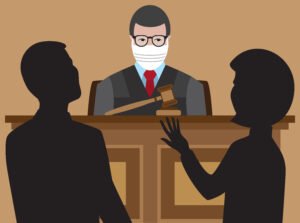Despite the fact that the second wave of the coronavirus crisis seems to be afoot, one by one, Biglaw firms are continuing to roll back their COVID-19 austerity measures. Cash seems to have been easy to come by for the most successful law firms during the pandemic, so why not?
Today, we have good news from Fox Rothschild, a firm that brought in $555,000,000 in gross revenue in 2019, placing it at No. 69 on the latest Am Law 100 ranking. Back in April, the firm announced that salaries would be slashed across the board, from partners to staff members. Specifically, a tiered salary reduction of between 10 percent and 15 percent for all attorneys and staff making more than $100,000 would take effect in May, while partners would reduce their monthly draws between 10 percent and 20 percent. At the same time, the firm announced that no layoffs would take place (but we have a feeling that the “productivity and performance-related dismissals” that occurred were likely stealth layoffs). In September, half of the cuts made to partners’ monthly draws were restored and half of the reductions to attorney and staff salaries were also restored. Now, all of these cuts are finally coming to an end.
In an announcement made earlier this week, firmwide managing partner Mark Morris said that effective November 1, monthly equity partner draws will be fully restored prospectively, and effective November 5, compensation reductions for all attorneys and staff will be fully restored prospectively. Here is a statement we received from Morris regarding the firm’s most recent salary updates:
Like many other law firms throughout the country, Fox Rothschild has spent this year confronting and addressing the economic challenges presented by the COVID-19 pandemic. Over the past seven months, we have continually evaluated our situation to ensure we maintained financial flexibility and remained in the best position possible to serve our clients and provide the strategy and support they need to navigate these uncertain times.
Upon our most recent financial assessment, we are pleased to announce that we are able to rescind the austerity measures we implemented earlier this year.
We appreciate that many of our attorneys and staff have overcome significant obstacles during the past seven months and made sacrifices in many aspects of their lives, and they have done so while serving our clients and the firm with the highest degree of professionalism, poise and perseverance. While the uncertainty and economic impact of the pandemic will likely remain with us for the foreseeable future, I am confident that we will continue to forge ahead and provide our clients, and each other, with the services and support needed during these trying times.
Congratulations to everyone at Fox Rothschild on the positive salary news.
If your firm or organization is slashing salaries or restoring previous cuts, closing its doors, or reducing the ranks of its lawyers or staff, whether through open layoffs, stealth layoffs, or voluntary buyouts, please don’t hesitate to let us know. Our vast network of tipsters is part of what makes Above the Law thrive. You can email us or text us (646-820-8477).
If you’d like to sign up for ATL’s Layoff Alerts, please scroll down and enter your email address in the box below this post. If you previously signed up for the layoff alerts, you don’t need to do anything. You’ll receive an email notification within minutes of each layoff, salary cut, or furlough announcement that we publish.
 Staci Zaretsky is a senior editor at Above the Law, where she’s worked since 2011. She’d love to hear from you, so please feel free to email her with any tips, questions, comments, or critiques. You can follow her on Twitter or connect with her on LinkedIn.
Staci Zaretsky is a senior editor at Above the Law, where she’s worked since 2011. She’d love to hear from you, so please feel free to email her with any tips, questions, comments, or critiques. You can follow her on Twitter or connect with her on LinkedIn.



 Jill Switzer has been an active member of the State Bar of California for over 40 years. She remembers practicing law in a kinder, gentler time. She’s had a diverse legal career, including stints as a deputy district attorney, a solo practice, and several senior in-house gigs. She now mediates full-time, which gives her the opportunity to see dinosaurs, millennials, and those in-between interact — it’s not always civil. You can reach her by email at
Jill Switzer has been an active member of the State Bar of California for over 40 years. She remembers practicing law in a kinder, gentler time. She’s had a diverse legal career, including stints as a deputy district attorney, a solo practice, and several senior in-house gigs. She now mediates full-time, which gives her the opportunity to see dinosaurs, millennials, and those in-between interact — it’s not always civil. You can reach her by email at 
 Kathryn Rubino is a Senior Editor at Above the Law, and host of
Kathryn Rubino is a Senior Editor at Above the Law, and host of 


 Jordan Rothman is a partner of
Jordan Rothman is a partner of 




 Jordan Rothman is a partner of
Jordan Rothman is a partner of 
